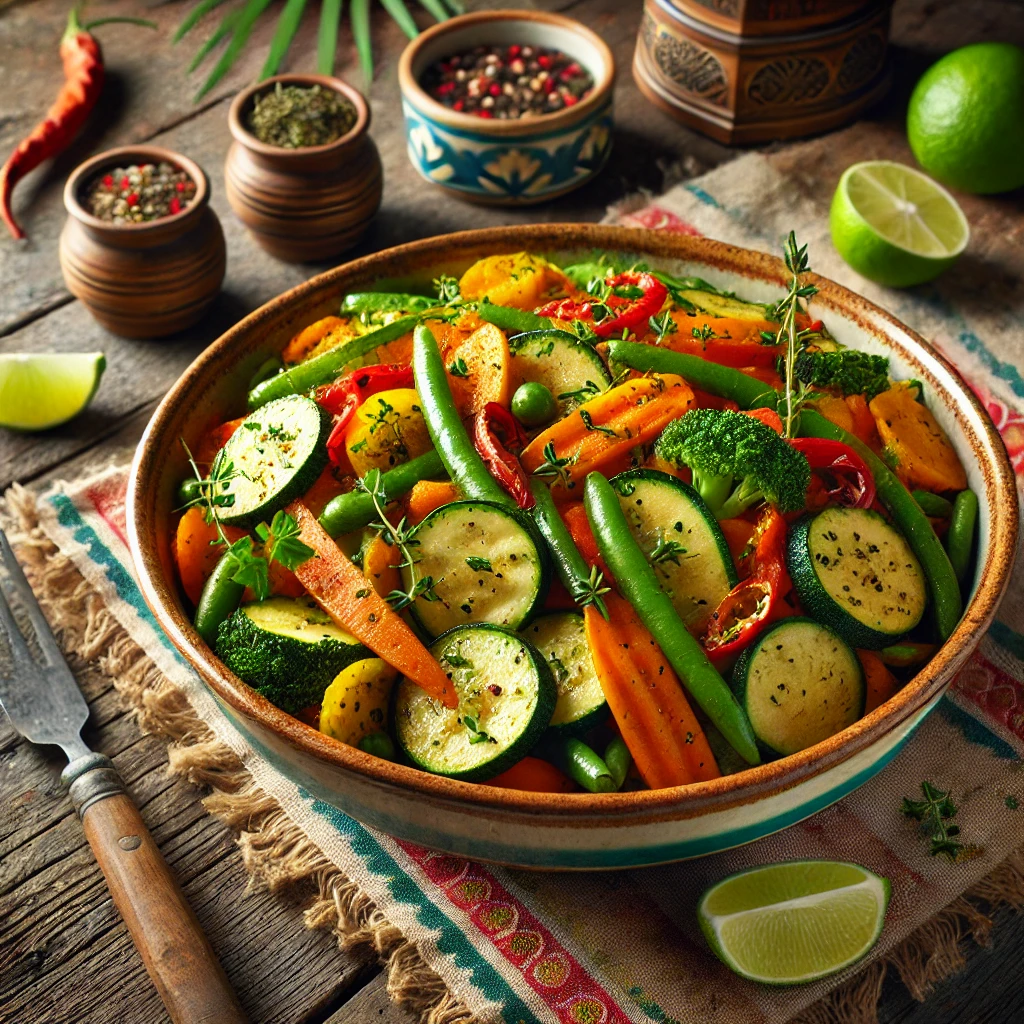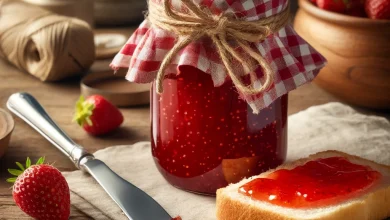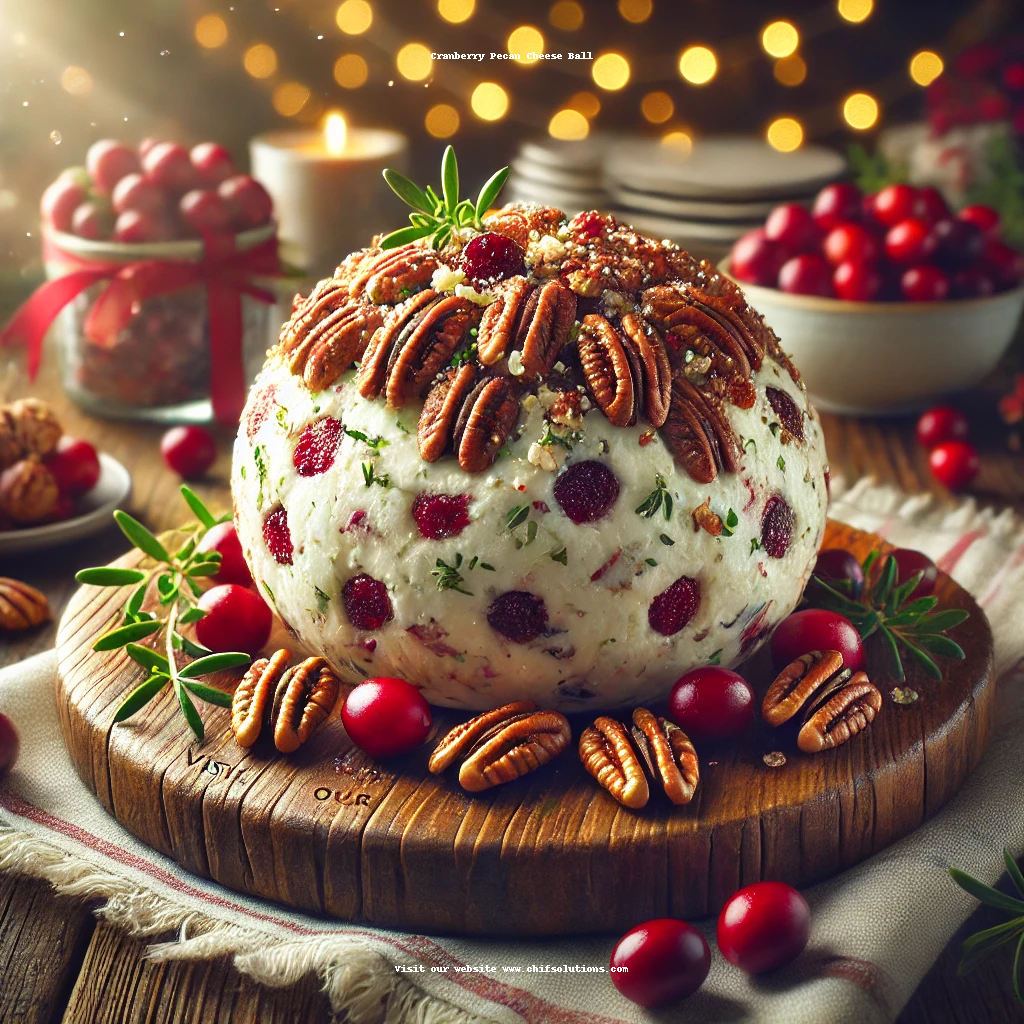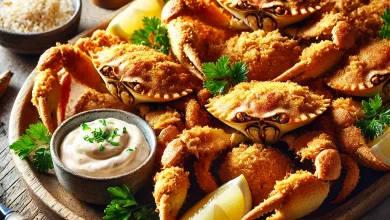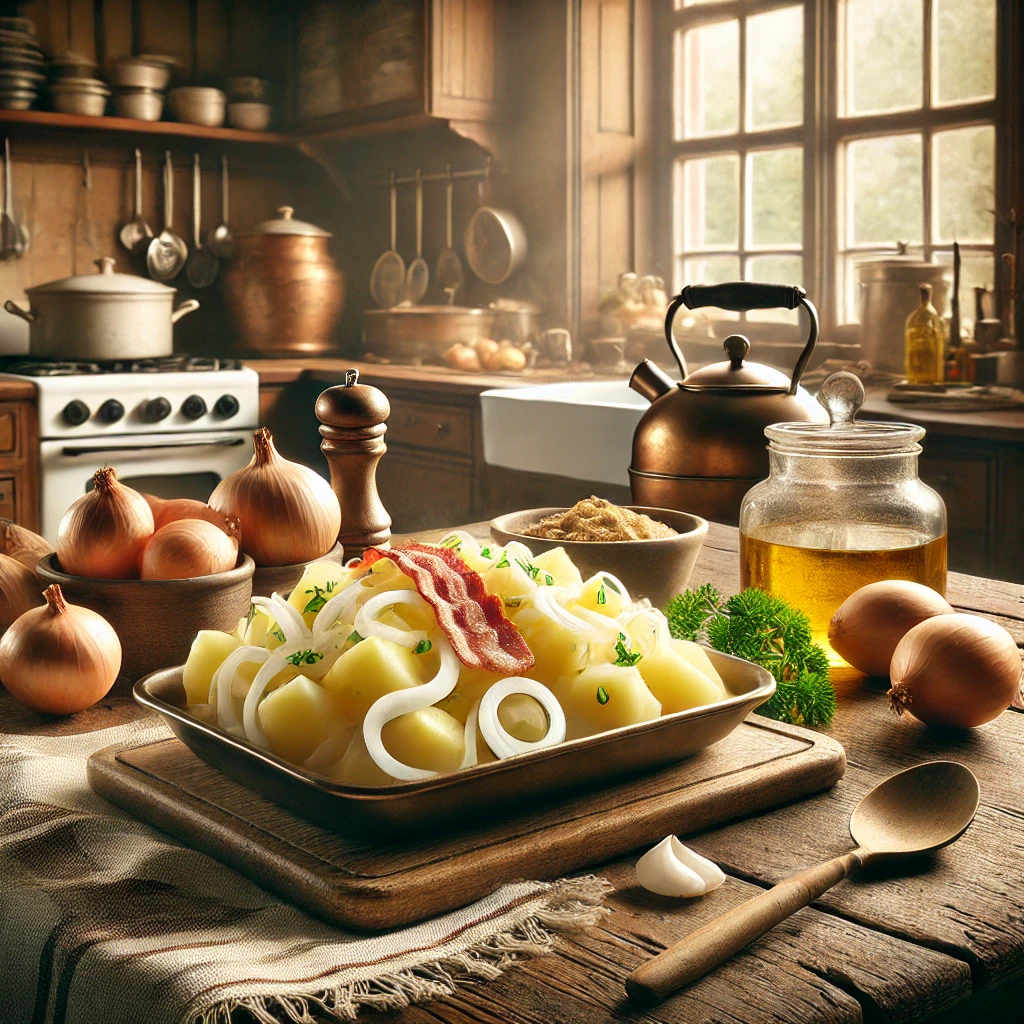
The German Potato Salad of the 1920s: A Glimpse into Culinary Tradition
The 1920s was a fascinating decade marked by innovation, change, and a deep appreciation for tradition. In Germany, food reflected the societal transformations of the era. One dish that remained a staple of German cuisine, both in the roaring cities and tranquil villages, was the humble yet delicious German potato salad (Kartoffelsalat). Unlike the creamy, mayonnaise-based potato salads often associated with American cookouts, the German variety was distinctly tangy and warm, embodying the flavors of simplicity and heartiness. This article delves into the history, preparation, and cultural significance of the German potato salad as it would have been in the 1920s.
The Historical Context of Kartoffelsalat in the 1920s
The 1920s were a tumultuous time for Germany. After the end of World War I in 1918, the country faced economic hardship, political unrest, and the challenges of rebuilding under the Treaty of Versailles. Food was both a necessity and a comfort, and traditional recipes like potato salad became even more vital as families sought affordable, satisfying meals.
Potatoes, introduced to Europe in the 16th century, had long been a cornerstone of German cuisine by the 1920s. They were versatile, cheap, and easy to grow, making them an indispensable ingredient for households of all economic backgrounds. The German potato salad, specifically, reflected the resourcefulness of the era.
While regional variations existed, the classic warm potato salad of southern Germany, particularly Bavaria, became a national favorite. It featured boiled potatoes dressed in a tangy vinaigrette made from vinegar, mustard, and bacon fat, often garnished with onions and parsley. This dish epitomized the concept of “simple elegance,” as it transformed basic ingredients into a flavorful, wholesome meal.
The Key Ingredients and Preparation
The German potato salad of the 1920s relied on readily available, unprocessed ingredients. Families often sourced these directly from their gardens or local markets. Below is a breakdown of the classic ingredients and their cultural relevance:
Potatoes: Typically waxy potatoes like Sieglinde or Bamberger Hörnchen were used, as they held their shape well after boiling. These varieties were prized for their smooth texture and slightly nutty flavor.
Bacon: In rural areas, pork was a common livestock, and bacon provided a rich, smoky element to the dish. Bacon fat was also used in the dressing, adding depth and heartiness.
Vinegar: Apple cider vinegar or wine vinegar brought a bright, tangy flavor that contrasted beautifully with the richness of the bacon.
Onions: Sautéed onions were a staple in many German recipes, offering sweetness and texture.
Mustard: German mustard, often coarser and more flavorful than its American counterpart, was a crucial ingredient, providing a subtle kick to the salad.
Herbs: Fresh parsley was the most common garnish, though chives or dill might have been used in some regions.
Preparation
- Boiling the Potatoes: The potatoes were boiled with their skins on to preserve flavor and prevent waterlogging. After cooling slightly, they were peeled and sliced while still warm.
- Creating the Dressing: The dressing was a warm emulsion of bacon fat, vinegar, and mustard, sometimes enhanced with a pinch of sugar to balance the acidity.
- Combining Ingredients: The sliced potatoes were gently tossed with the warm dressing and sautéed onions to ensure they absorbed the flavors fully.
- Serving: German potato salad was often served warm, though it could also be enjoyed at room temperature. It was a versatile dish, pairing well with sausages, schnitzel, or as a standalone meal.
Regional Variations in the 1920s
Germany’s diverse regions each put their unique spin on the potato salad:
- Bavarian Style: This was the most iconic version, featuring warm potatoes and a bacon-infused vinaigrette.
- Swabian Style: In southern Germany, the Swabian version often omitted bacon, focusing instead on a delicate balance of vinegar, oil, and broth.
- Northern German Style: The north preferred a creamier potato salad, incorporating mayonnaise or a dairy-based dressing, though this was less common in the 1920s due to limited refrigeration.
Each region’s adaptation reflected its agricultural bounty and cultural influences, demonstrating how a single dish could evolve while retaining its essence.

Cultural Significance
The German potato salad was more than a dish—it was a symbol of resilience and community. During the economic struggles of the 1920s, families often gathered around modest meals that celebrated tradition and togetherness. Potato salad was a common feature at weddings, holidays, and Sunday lunches. It was also a popular dish at beer gardens, where it complemented hearty ales and convivial gatherings.
In rural areas, preparing potato salad was a family affair, with children often tasked with peeling potatoes while adults prepared the dressing. This process fostered a sense of collaboration and pride in home cooking, values deeply ingrained in German culture.
Legacy of the 1920s Potato Salad
Though nearly a century has passed, the German potato salad of the 1920s remains a beloved dish. Its enduring popularity is a testament to the ingenuity of the cooks who perfected it during a challenging era. Today, it continues to be a favorite at German-inspired restaurants, Oktoberfest celebrations, and family dinners around the world.
Modern adaptations might include additional ingredients like dill pickles or hard-boiled eggs, but the core elements—a balance of tangy, savory, and comforting flavors—remain unchanged. In a world of fast food and culinary trends, the German potato salad stands as a reminder of the timeless appeal of simple, heartfelt cooking.
Conclusion
The German potato salad of the 1920s is a culinary time capsule, offering a taste of tradition and a glimpse into the resilience of a nation navigating change. Its ingredients are humble, its preparation straightforward, yet its impact on German culture is profound. Whether served at a bustling beer garden or a quiet family table, this dish continues to connect people across generations, proving that some recipes are truly timeless.

